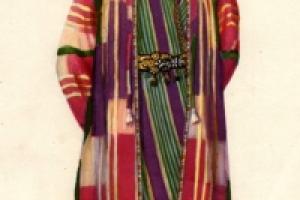Black and white pictures for newborns. Black and white contrast pictures for newborns
This is true, but it does not fully apply to newborns.
Kids love bright toys because their eyesight is not yet developed, pastel colors and halftones are not for them.
And newborns see so vaguely that for them the perfect contrasting combination of black and white.
Black and white pictures for newborns are the best remedy to stimulate vision. They really like such pictures, they look at them for a long time and carefully.
These should not be any real pictures, complex images at all. Best of all, simple motifs, geometric patterns, faces, but large enough, clear and contrasting.
But what to do - where to get such pictures and how to show them? There are several options for this.
1. Clothes, diapers, bedspreads, rugs with a black and white pattern
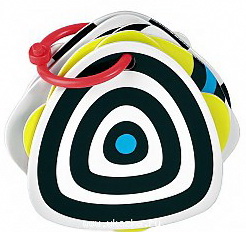
No, no one is asking you to decorate the entire nursery in black and white. But if the kid comes across something with a black and white pattern, he will be very interested. It can be a mother's shirt with polka dots or a checkered bedspread.
2. Actually pictures
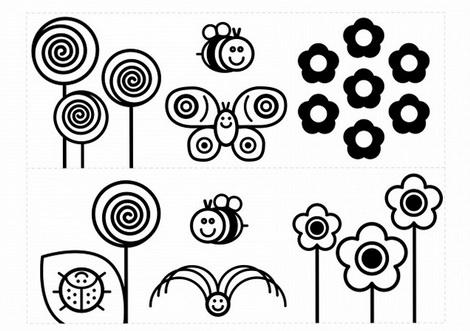
These can be either special black and white pictures for newborns that can be found on the Internet and printed, or your own hand-drawn drawings with black marker on white paper.
Face pictures for newborns are especially interesting. Pictures can be shown or attached in some way in the field of view of the baby - to the crib, for example. The kid will love everything.
3. Black and white crib mobile

Since you are unlikely to find such a thing on sale, you can make a mobile with your own hands. For example, sew black and white toys for newborns on a felt mobile. You can also hang just pictures “facing” the child to the mobile, or special black and white cubes for newborns.
>>>
4. Cards and books for newborns with black and white pictures
For example, “Hey baby! Book for newborns”, which is a separate card connected by a ring into a book.
Other books come with special clips for cribs or strollers.

Such cubes can be found on sale, but an easier option is to print a “pattern” of such a cube (see below), cut it out and glue it. Cubes can be hung over the crib or attached to the mobile. Your baby will be enchanted!
Anything can be drawn on the cubes, but remember that face pictures for newborns are very useful. Offer him painted emoticons or animal faces with eyes.
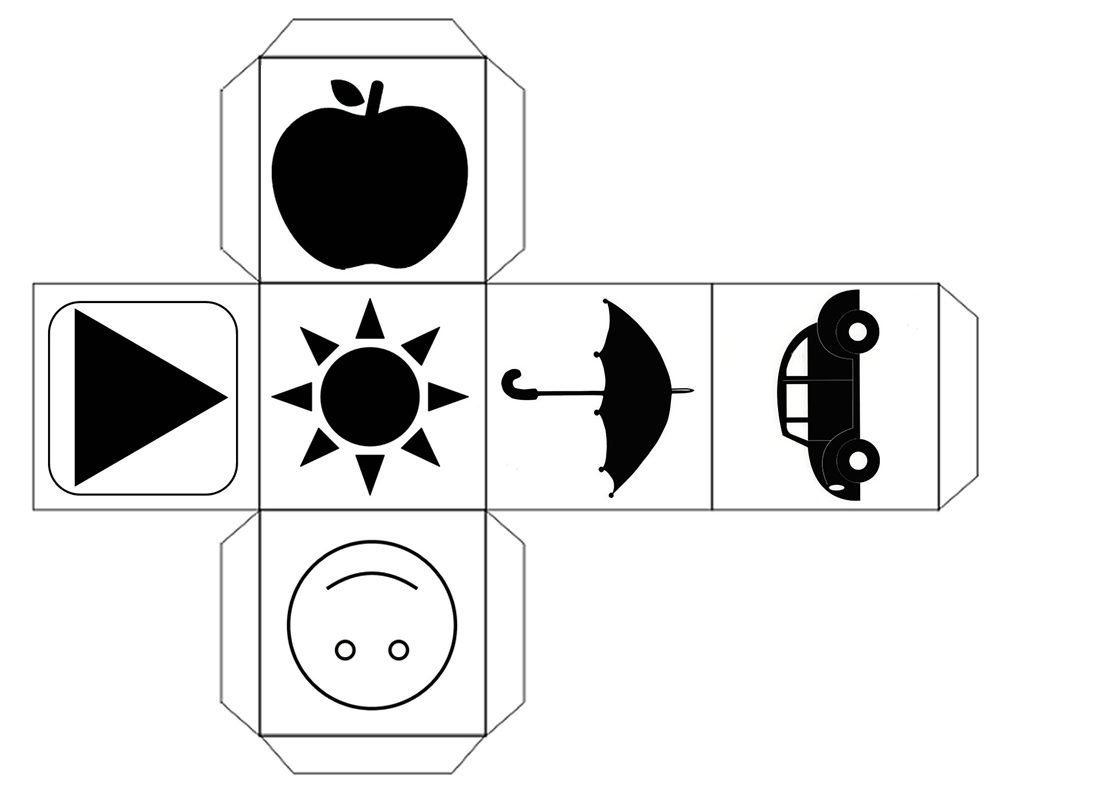
Here are some options for cubes that you can save to your computer and print.
24459
Download black and white pictures for newborns. How to make a mobile from cubes for a child with your own hands and how to deal with printouts correctly.
Black and white pictures for newborns perfectly stimulate the development of vision in the first months of life. Such gurus wrote about them early development like Cecile Lupan and Sarah Brewer in their book Superchild. In the first days of life, a child's vision is not as sharp as that of an adult. It distinguishes objects at close range better, and black-and-white images are more visible than color ones due to the structural features of the retina during this period.
The period from birth to six months is very important for the development of a child's vision, because it is during this period that the eyeball, the paths leading from it to the brain, and the areas of the brain responsible for receiving and processing visual information are most quickly and intensively formed.
Psychophysiologists speak of this period as critical for the formation of the visual system. It is the first 6 months of a child's life that are most favorable for external stimulation and development of the visual system. As a result of such exercises, visual functions are significantly improved: light perception, visual acuity, color perception, contrast sensitivity, field of view.
Classes can be carried out on a changing table, in a crib, on a bed, etc., but it is better that the light source is behind the baby's head.
It’s worth starting with the simplest lines and following a clear black / white contrast.
In the first months, it is important to teach the child to look at pictures, focus and follow objects.
Where to hang black and white pictures
- in bed
- stick on walls
- hang on the fridge
- into large cubes
- make cards, collages or a book, show the baby in turn,
- a ball or a mobile over a bed with drawings,
- development mat.
How to use black and white pictures for newborns
Show your baby pictures while you walk around the apartment with him, feed him or put him on his tummy. A visually rich space (and constant visual stimulation) has a direct relationship with a baby's restful sleep.
Don't show the baby too much pictures immediately and watch the reaction. If he does not focus on the drawing and does not show interest in it at all - do not be discouraged (everything has its time).
Practice tracking: we catch our eye on the picture and move it slowly to the right, to the left, up and down, then over time we complicate the trajectory: in an arc, diagonally, in a circle.
Use while lying on your tummy and crawling. The kid tries to raise his head higher and higher, and he will be interested in seeing something there that catches the eye.
Attract and switch attention, soothe.
Changeimage can once every 3 days. If you like the picture, you can leave it for a longer time.
Distance from child's eyes to image aged 10 days - 1.5 months - about 30 cm . The size of the drawings is better than A4 or A5 (its quarter).
From 3 months old, images can be replaced with colorful, complex and “hygienic” ones - the baby will begin to drag them into his mouth.
How to do:
- You can draw any picture by hand.
- Make a mobile with your own hands from cubes. We print out pictures from a pdf file (there is already a ready-made layout for cubes), cut it out, glue it in the form of cubes, hang it on a ribbon (here is your imagination).
I made two toys for the baby from 10 cubes. I printed it on medium-thick photo paper, it turned out glossy and very beautiful) They hold even without glue, but still it’s worth gluing for strength. 

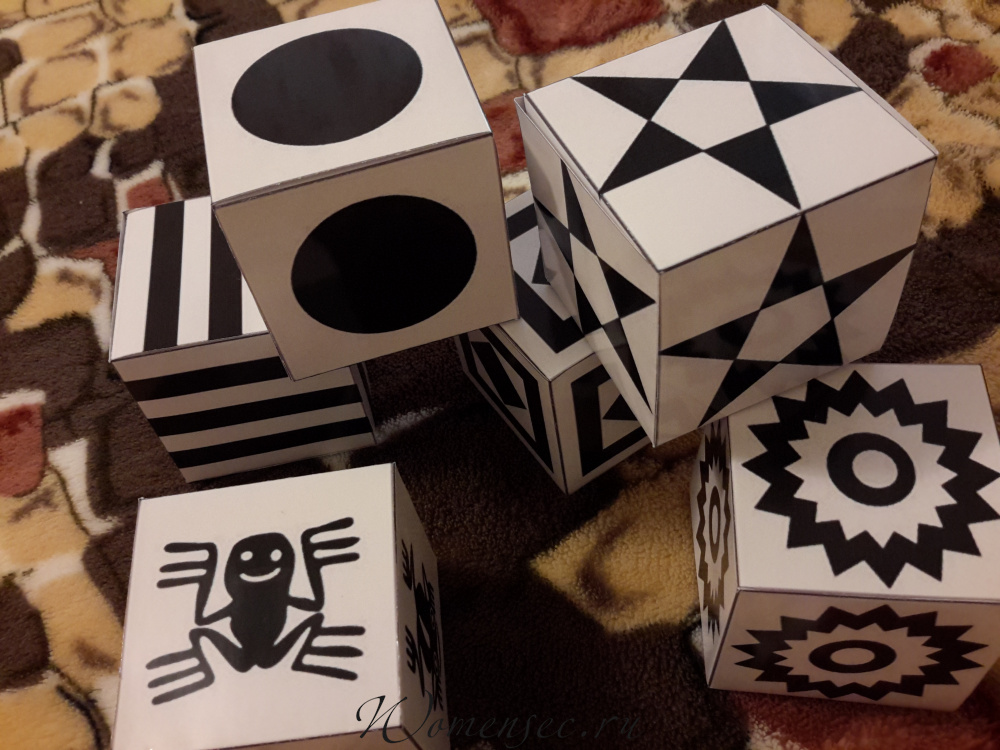
More than 80% of the information from the outside world a person receives through vision. Therefore, for the full and harmonious development small child need to stimulate his visual perception. How younger child the more intensively he learns. From birth, children need new experiences, food for brain development.
If the brain processes only sound stimuli, it does not work at full capacity, which means that it is very important to give the child the opportunity to see different objects as early as possible. The child's vision develops gradually. Up to two or three months, he does not distinguish colors.
For this age, clear, contrasting black and white pictures are best suited, which are installed at a distance of 20-30 cm from the child's eyes. You can use them for as long as the child likes them and arouses his interest.
Sarah Brewer's Super Baby describes the role of black and white images in the development of children aged 0 to 3 months.
Excerpts from "Super Kid" by Sarah Brewer
 Vision plays an important role in the development of a child. Seeing various objects in front of him, the child wants to know what they are. The desire to reach for objects, crawl, roll over comes from natural curiosity and the desire to explore everything that the child sees around him. In the first two months of his life, he sees best at close range.
Vision plays an important role in the development of a child. Seeing various objects in front of him, the child wants to know what they are. The desire to reach for objects, crawl, roll over comes from natural curiosity and the desire to explore everything that the child sees around him. In the first two months of his life, he sees best at close range.
The field of view of a newborn child is more limited than that of an adult. Presumably, objects that are no more than 30 degrees to the left and right of him, 10 degrees above and below and at a distance not exceeding 90 cm from his eyes fall into the field of view of the child. When he suckles at the breast, he naturally focuses his vision on objects that are at a distance of 15 - 20 cm.
Usually by two weeks, the baby begins to recognize the faces of the mother and father. His visual acuity is 10 to 30 percent less than an adult, so it is more difficult for him to recognize fine lines that he sees as a blurry gray mass. The retina of the human eye contains photoreceptors such as rods and cones. Rods are cells that are sensitive to weak light and movement and can only distinguish between shades of black and white.
Cones are cells that are responsible for daytime vision and allow you to see different colors and shades. Newborn babies like contrasting black and white drawings more than colored ones, because at this age their rods work better than cones. All other colors are seen as shades of gray.
Because black and white colors are most easily recognized by children, the use of black and white pictures stimulates the formation of connections between neurons in the cerebral cortex, develops attention, stimulates natural children's curiosity and calms down during periods of overexcitation.
Also, newborns like straight or broken lines more than curved or wavy ones. In addition, they are attracted to simple, schematic images. human faces.
By the sixth week, the baby can clearly focus on various objects at a distance of about 30 cm from him. He is especially attracted to simple images of faces and concentric circles in different versions. The child studies the outer edges of the drawings more closely than their middle.
The human brain is completely formed during fetal development. The number of neurons after birth does not increase, the brain develops due to the formation of new connections between neurons. The number of contacts between neurons in the area of the cerebral cortex responsible for visual information begins to gradually increase in the first 2 months after birth.
 Between 2 and 4 months, the number of connections between neurons begins to grow sharply and increases by at least 10 times. At this time, the child's vision improves dramatically, he can follow objects with his eyes and turn in the direction where the sound comes from. He begins to like more complex drawings, rounded lines and shapes, rather than straight and broken ones. From the behavior of the child, you can see that he remembers what he saw.
Between 2 and 4 months, the number of connections between neurons begins to grow sharply and increases by at least 10 times. At this time, the child's vision improves dramatically, he can follow objects with his eyes and turn in the direction where the sound comes from. He begins to like more complex drawings, rounded lines and shapes, rather than straight and broken ones. From the behavior of the child, you can see that he remembers what he saw.
Many babies begin to see colors by the age of two months because the cones begin to work in the retina. But until three months old, they supposedly don't see blue as well as yellow or red.
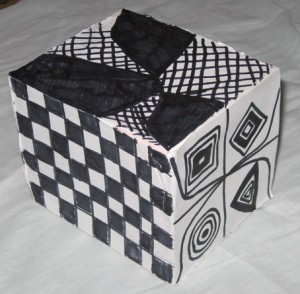 By four months, a child can see all colors and can focus on both near and far objects. He enjoys watching parents and other people, especially children. He still prefers curved lines to straight ones and turns his attention to more complex drawings. At 4-5 months, the child begins to reach for the objects that he sees, at 7-8 months he can grab objects and try to put them in his mouth.
By four months, a child can see all colors and can focus on both near and far objects. He enjoys watching parents and other people, especially children. He still prefers curved lines to straight ones and turns his attention to more complex drawings. At 4-5 months, the child begins to reach for the objects that he sees, at 7-8 months he can grab objects and try to put them in his mouth.
A child whose visual perception is constantly stimulated is usually calmer and more attentive during wakefulness than a child who is deprived of such stimulation.
The number of connections between neurons in the visual cortex peaks at 8 months of age, peaks until four years of age, and gradually halves over the next five years.
Therefore, binocular vision develops during the first four years of life, and is fully formed by the age of four. Visual acuity is practically established by the age of five and is finally formed by the age of ten.
You can draw pictures on a white sheet of paper yourself with a black bold marker, black gouache or ink, or print ready-made templates. Subject of drawings:- geometric shapes (acquaintance with shapes),
- emoticons (study of emotions),
- vegetables fruits,
- silhouettes of animals and insects (wildlife),
- just broken lines, punctuation marks, etc.
The sizes of the pictures can be different, from ¼ A4 to A4 (a whole sheet), since the real objects that surround the child are also not the same size. It will soon become clear which of them are more interesting for the child.
You can place pictures on cardboard boxes, on boxes from perfumes, light bulbs, disks and cassettes, so that they can be conveniently placed in front of the child.
Pictures can be either flat (drawn on a sheet of paper) or three-dimensional (drawn on cylinders, cubes, etc.)
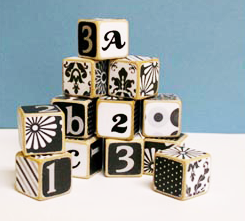 Cubes can come in handy in the future, when the child grows up and will not just look at them, but play with them, learn letters and numbers from them.
Cubes can come in handy in the future, when the child grows up and will not just look at them, but play with them, learn letters and numbers from them.
Pictures can be static (drawn) or moving, when cut black figures (stripes, circles, hearts, butterflies, etc.) are attached to a bar in front of a white background and move slightly from any light breath. Also, pictures can be placed in the form of an overlay on the side of a crib.
There are no specific recommendations on when to move from the simplest pictures (squares, triangles, straight lines) to more complex ones. The child himself will make it clear what he is interested in, carefully examining some pictures and quickly scanning others with his eyes. It is not necessary to cover the pictures with tape, as they are intended for an age when children will not put them in their mouths.
 You can make a mobile (carousel), which is suspended above the bed, from black and white pictures pasted on cardboard. Some firms produce ready-made black and white toys (mobiles) and educational mats. From the age of four months, you can replace black and white pictures on your mobile phone with color ones.
You can make a mobile (carousel), which is suspended above the bed, from black and white pictures pasted on cardboard. Some firms produce ready-made black and white toys (mobiles) and educational mats. From the age of four months, you can replace black and white pictures on your mobile phone with color ones.
There are also Wee See black and white cartoons for babies, in which geometric shapes move smoothly across the screen and flow into each other to beautiful melodic music.
In addition to using the above pictures, in the first three months of a child’s life, the following visual exercises can be performed:
- Face to face communication: talk to the child at a distance of 25-30 cm, smile at him, make "faces";
- Hold a rattle at the level of the child's eyes at a distance of 25-30 cm and slowly move it from side to side;
- Carry the baby around the house as often as possible so that he looks at everything around.
In order to develop visual perception in a newborn, speech therapists and psychologists recommend using early age engage with your baby using black and white pictures and photos for newborns.
Between birth and six months, their rods, cells in the retina that are especially sensitive to weak light and distinguish only between black and white, function better than cones, cells that are sensitive to bright light. Active kids prefer to look at straight or broken lines, concentric circles, simple images of faces. Newborns look more closely at the outer edges of the black and white pictures than at the center.
For normal development vision is very important for a child, so exercises for its development are very important. Contemplation of objects encourages the child to reach out to them, touch them, and later learn how they are called and used. Up to three months, the child does not distinguish colors, so it is black and white pictures that are great for the development of children. To help the baby develop vision, mothers can use black and white pictures as early as the seventh to tenth day after birth. These should preferably be abstract images. After two or three days, the baby will lose interest in these pictures, then you need to change them to new images.
How to deal with developing pictures for newborns?
Let's consider how to deal with a child according to developing pictures for newborns: at a distance of thirty centimeters from the child's eyes, show the card to the baby. After making sure that the child has fixed his gaze on it, move the black-and-white picture to the right, then to the left to develop horizontal tracking. An activity in which the picture approaches and moves away from the baby develops vertical tracking. The older the child becomes, the more difficult the trajectory of movement of objects for tracing: the drawing can be moved along two diagonals, in a circle, along an arc, in a wave-like movement.
Pictures can be shown, or you can attach sheets of paper with black and white contrasting patterns to the wall of the crib. They need to be changed as the complexity of the image increases - this will help the baby focus his eyes. You can also use black and white photographs of parents and family members, toys as educational pictures for newborns.
From the pictures you can make a child black and white: hang cards on a hanger, crossed pencils or a stretched ribbon on threads. You can also replace the hanging toys on the finished mobile with black and white pictures. Play material can also be hung on the walls throughout the house, when the baby can visually focus while sitting in the arms of an adult, thus walking around the house will be more interesting for the newborn.
Educational pictures for newborns
Educational black and white pictures can be bought ready-made in the store or printed out on your own, for example, such as are presented in our gallery.
A one-year-old child can complicate the task - the pictures can depict numbers, letters, household items, fruits, vegetables. The next stage of development are designed for early learning to read.
Pictures in black and white are not only useful for the early development of the child, but also give mommy valuable minutes while the baby is busy contemplating, doing himself or doing household chores.
 |
 |
 |
 |
 |
 |
The formation of the human brain takes place in the mother's belly. And the development of the brain after birth is facilitated by the emergence of new neural connections. And visual perception in this important process is of great importance.
More than 80% of the information from the outside world a person receives through vision. Therefore, for the full and harmonious development of a small child, it is necessary to stimulate his visual perception. The younger the child, the more intensively he learns. From birth, children need new experiences, food for brain development. If the brain processes only sound stimuli, it does not work at full capacity, which means that it is very important to give the child the opportunity to see different objects as early as possible. The child's vision develops gradually. Up to two or three months, he does not distinguish colors. For this age, clear, contrasting black and white pictures are best suited, which are installed at a distance of 20-30 cm from the child's eyes. You can use them for as long as the child likes them and arouses his interest. Sarah Brewer's Super Baby describes the role of black and white images in the development of children aged 0 to 3 months.
Excerpts from "Super Kid" by Sarah Brewer
Vision plays an important role in the development of a child. Seeing various objects in front of him, the child wants to know what they are. The desire to reach for objects, crawl, roll over comes from natural curiosity and the desire to explore everything that the child sees around him. In the first two months of his life, he sees best at close range. The field of view of a newborn child is more limited than that of an adult. Presumably, objects that are no more than 30 degrees to the left and right of him, 10 degrees above and below and at a distance not exceeding 90 cm from his eyes fall into the field of view of the child. When he suckles, he naturally focuses his vision on objects that are at a distance of 15 - 20 cm. Usually, by two weeks, the child begins to recognize the faces of his mother and father. His visual acuity is 10 to 30 percent less than an adult, so it is more difficult for him to recognize fine lines that he sees as a blurry gray mass. The retina of the human eye contains photoreceptors such as rods and cones. Rods are cells that are sensitive to weak light and movement and only distinguish between shades of black and white. Cones are cells that are responsible for daytime vision and allow you to see different colors and shades. Newborn babies like contrasting black and white drawings more than colored ones, because at this age their rods work better than cones. All other colors are seen as shades of gray. Since black and white colors are most easily recognized by children, the use of black and white pictures stimulates the formation of connections between neurons in the cerebral cortex, develops attention, stimulates natural children's curiosity and calms down during periods of overexcitation. Also, newborns like straight or broken lines more than curved or wavy ones. In addition, they are attracted to simple, sketchy images of human faces. By the sixth week, the baby can clearly focus on various objects at a distance of about 30 cm from him. He is especially attracted to simple images of faces and concentric circles in different versions. The child studies the outer edges of the drawings more closely than their middle. The human brain is completely formed during fetal development. The number of neurons after birth does not increase, the brain develops due to the formation of new connections between neurons. The number of contacts between neurons in the area of the cerebral cortex responsible for visual information begins to gradually increase in the first 2 months after birth. Between 2 and 4 months, the number of connections between neurons begins to grow sharply and increases by at least 10 times. At this time, the child's vision improves dramatically, he can follow objects with his eyes and turn in the direction where the sound comes from. He begins to like more complex drawings, rounded lines and shapes, rather than straight and broken ones. From the behavior of the child, you can see that he remembers what he saw. Many babies begin to see colors by the age of two months because the cones begin to work in the retina. But until three months old, they supposedly don't see blue as well as yellow or red. By four months, a child can see all colors and can focus on both near and far objects. He enjoys watching parents and other people, especially children. He still prefers curved lines to straight ones and turns his attention to more complex drawings. At 4-5 months, the child begins to reach for the objects that he sees, at 7-8 months he can grab objects and try to put them in his mouth. A child whose visual perception is constantly stimulated is usually calmer and more attentive during wakefulness than a child who is deprived of such stimulation. The number of connections between neurons in the visual cortex peaks at 8 months of age, peaks until four years of age, and gradually halves over the next five years. Therefore, binocular vision develops during the first four years of life, and is fully formed by the age of four. Visual acuity is practically established by the age of five and is finally formed by the age of ten.
What kind of pictures for newborns do the little ones like - the benefits of pictures for the development of babies
Children are incorrigible explorers who begin to explore the world as soon as they can hold their heads and grab their mother's finger. The vision of a newborn is more modest than that of an adult -the baby is able to clearly see objects only at close range . Further, visual abilities change in accordance with age. And already with them - and interest in certain pictures.
- At 2 weeks“From birth” the baby is already able to recognize the face of mom (dad), but it is still difficult for him to see thin lines, as well as to distinguish colors. So at that age the best way- pictures with broken and straight lines, simplified images of faces, cells, simple geometry.
- 1.5 months the baby is attracted to concentric circles (moreover, more - the circle itself than its center).
- 2-4 months. The baby's vision changes dramatically - he already turns to where the sound comes from and follows the object. For this age, pictures with 4 circles, curved lines and more complex shapes, animals (in a simple image) are suitable.
- 4 months. The kid is able to focus on an object of any range, distinguishes colors and observes the world around him. Curved lines of drawings at this age are more preferable, but complex drawings can already be used.

How to use black and white pictures for newborns - first picture games for babies under one year old
- Start with the simplest lines. Look for clear black/white contrast.
- Change images every 3 days.
- When the baby shows interest in the picture leave it for a longer time- let the baby study it.
- Pictures can be drawn by hand on paper and hang it right in the crib, stick it on the walls, the refrigerator or on large cubes. As an option - cards that can be shown to the baby in turn, a contrasting soft ball with black and white drawings, a developing rug, a book, a carousel with drawings, collages, etc.
- Show your little one pictures while walking with him around the apartment, feed or lay him on his tummy. A visually rich space (and constant visual stimulation) has a direct relationship with a baby's restful sleep.
- Don't show your baby too many pictures at once and watch the reaction. If he does not focus his eyes on the drawing and does not show interest in it at all - do not be upset (everything has its time).
- The distance from the child's eyes to the image at the age of 10 days - 1.5 months - about 30 cm. The size of the drawings - A4 format or even a quarter.
- From 4 months images can replace with colored, complex and "hygienically clean"- the baby will begin to drag them into his mouth. Here you can already use high-quality toys with black and white drawings and cartoons for the little ones (the movement of black and white lines and shapes to the right music).
- And, of course, do not forget about such nuances of the development of visual perception as communication with the baby at a distance of 30 cm, contact with smiles and faces, rattle exercises(from side to side so that the baby follows her gaze), new impressions (tours around the apartment with a demonstration of all interesting items).
Practical implementation of black and white ideas
You can draw pictures on a white sheet of paper yourself with a black bold marker, black gouache or ink, or print ready-made templates. Subject of drawings:
- geometric shapes (acquaintance with shapes),
- emoticons (study of emotions),
- vegetables fruits,
- silhouettes of animals and insects (wildlife),
- just broken lines, punctuation marks, etc.
The sizes of the pictures can be different, from ¼ A4 to A4 (a whole sheet), since the real objects that surround the child are also not the same size. It will soon become clear which of them are more interesting for the child. You can place pictures on cardboard boxes, on boxes from perfumes, light bulbs, disks and cassettes, so that they can be conveniently placed in front of the child.
Pictures can be either flat (drawn on a piece of paper) or three-dimensional (drawn on cylinders, cubes, etc.). them letters and numbers. Pictures can be static (drawn) or moving, when cut black figures (stripes, circles, hearts, butterflies, etc.) are attached to a bar in front of a white background and move slightly from any light breath. Also, pictures can be placed in the form of an overlay on the side of a crib.
There are no specific recommendations on when to move from the simplest pictures (squares, triangles, straight lines) to more complex ones. The child himself will make it clear what he is interested in, carefully examining some pictures and quickly scanning others with his eyes. It is not necessary to cover the pictures with tape, as they are intended for an age when children will not put them in their mouths.
You can make a mobile (carousel), which is suspended above the bed, from black and white pictures pasted on cardboard. Some firms produce ready-made black and white toys (mobiles) and educational mats. From the age of four months, you can replace black and white pictures on your mobile phone with color ones.
There are also Wee See black and white cartoons for babies, in which geometric shapes move smoothly across the screen and flow into each other to beautiful melodic music.
3.
4.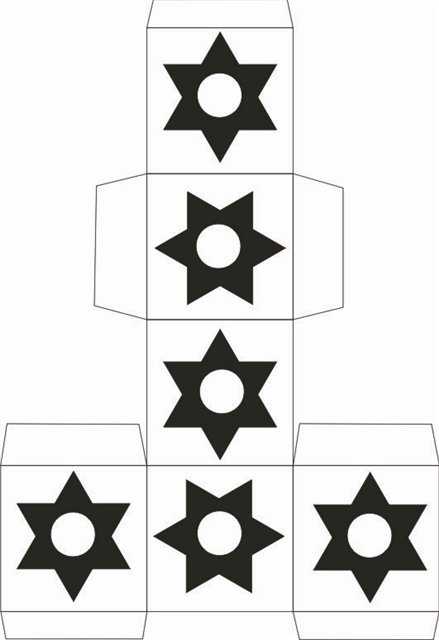
5..
6.
7..
8.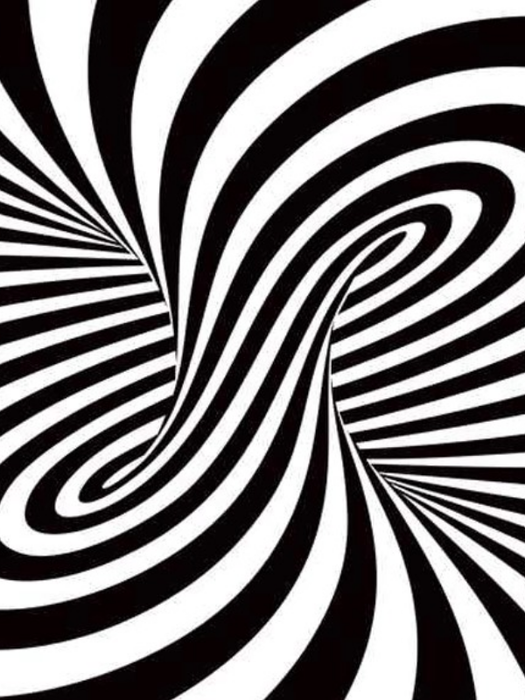
9.
10.
11.
12.
13.
14.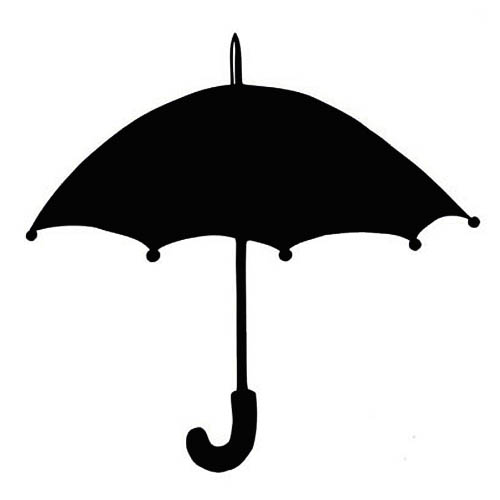
15..
16.
17.
18.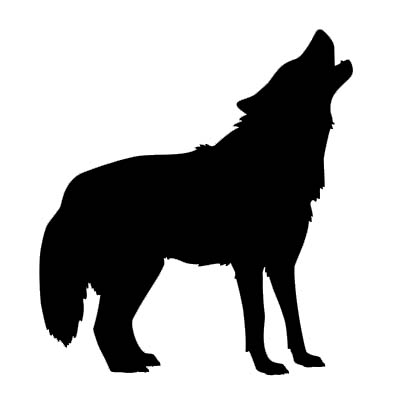
19.
20.![]()
21.
22.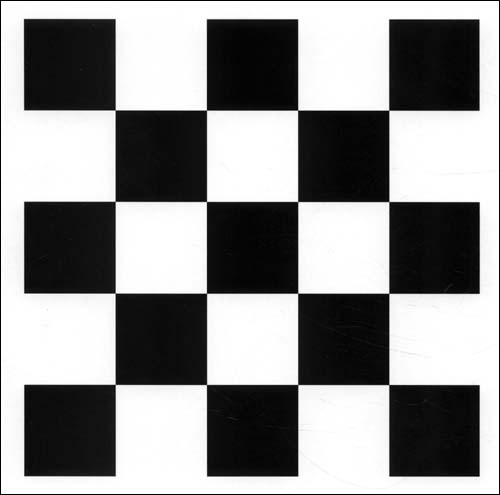
23.
24.
Pictures
cited

